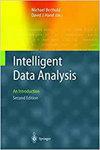信用风险评估的多层多视图叠加模型
IF 0.8
4区 计算机科学
Q4 COMPUTER SCIENCE, ARTIFICIAL INTELLIGENCE
引用次数: 0
摘要
信用风险评估在决定金融机构的银行政策和商业战略方面起着关键作用。集成学习方法已被证明比单独分类器和默认预测统计技术更具竞争力。然而,大多数研究侧重于提高整体预测的准确性,而不是提高对实际违约贷款的识别。此外,以往的研究对模型的可解释性没有给予足够的重视。为了填补这些空白,我们提出了一种多层多视图堆叠集成(MLMVS)方法来预测P2P借贷场景中的违约风险。作为主要的创新,我们的提议探索了多视图学习和软概率输出,以产生基于堆叠的多层集成。嵌入式可解释的人工智能工具LIME用于解释预测结果。我们在Lending Club数据集上对MLMVS进行了全面的分析,并进行了对比实验,将其与众多知名的个体分类器和集成分类方法进行了比较,证明了MLMVS的优越性。本文章由计算机程序翻译,如有差异,请以英文原文为准。
A multi-layer multi-view stacking model for credit risk assessment
Credit risk assessment plays a key role in determining the banking policies and commercial strategies of financial institutions. Ensemble learning approaches have been validated to be more competitive than individual classifiers and statistical techniques for default prediction. However, most researches focused on improving overall prediction accuracy rather than improving the identification of actual defaulted loans. In addition, model interpretability has not been paid enough attention in previous studies. To fill up these gaps, we propose a Multi-layer Multi-view Stacking Integration (MLMVS) approach to predict default risk in the P2P lending scenario. As the main innovation, our proposal explores multi-view learning and soft probability outputs to produce multi-layer integration based on stacking. An interpretable artificial intelligence tool LIME is embedded for interpreting the prediction results. We perform a comprehensive analysis of MLMVS on the Lending Club dataset and conduct comparative experiments to compare it with a number of well-known individual classifiers and ensemble classification methods, which demonstrate the superiority of MLMVS.
求助全文
通过发布文献求助,成功后即可免费获取论文全文。
去求助
来源期刊

Intelligent Data Analysis
工程技术-计算机:人工智能
CiteScore
2.20
自引率
5.90%
发文量
85
审稿时长
3.3 months
期刊介绍:
Intelligent Data Analysis provides a forum for the examination of issues related to the research and applications of Artificial Intelligence techniques in data analysis across a variety of disciplines. These techniques include (but are not limited to): all areas of data visualization, data pre-processing (fusion, editing, transformation, filtering, sampling), data engineering, database mining techniques, tools and applications, use of domain knowledge in data analysis, big data applications, evolutionary algorithms, machine learning, neural nets, fuzzy logic, statistical pattern recognition, knowledge filtering, and post-processing. In particular, papers are preferred that discuss development of new AI related data analysis architectures, methodologies, and techniques and their applications to various domains.
 求助内容:
求助内容: 应助结果提醒方式:
应助结果提醒方式:


